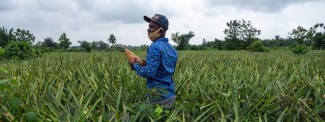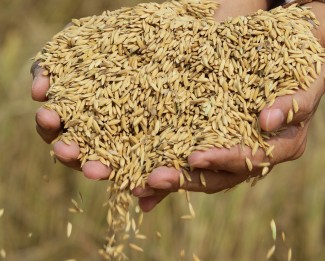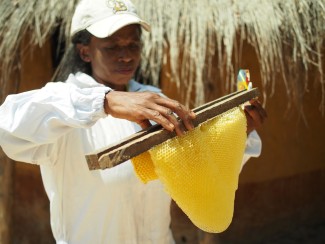|
|
|
On the journey south from Chittagong to Cox’s Bazar in southern Bangladesh the dynamism is palpable. A plush new road disrupts the ruts south of the city, funnelling travellers through green rice fields. The traffic is less apocalyptic than in the capital Dhaka but the shiny symbols of a youthful middle class still file past. The battlements of new concrete kingdoms flank the roadside.
The voyage reflects Bangladesh’s own. Civil war and famine in the early 1970s gave way to a green revolution. Ingenious industrial policies helped build employment in a booming garment industry, and the services sector is now expanding fast. Extreme poverty fell from four-fifths to less than a tenth. The economy will be one of the world’s three fastest-growing in 2019.
Health and education flourished. At independence in 1971 the average Bangladeshi lived to the age of 47. Now, she or he can expect to reach 72, higher than the South Asian average. Infant mortality plunged from 149 to 28 over the same period, also outperforming the region. Nearly three-quarters of children go to secondary school, up from only a fifth in 1973.
These feats of social headway are partly testament to Bangladesh’s legendary civil society. Over decades, non-government organisation workers honed their skills in rural areas. Alongside the UN and government in 2015 this enabled them to house, immunise and feed nearly three-quarters of a million Rohingya refugees at short notice after they walked across the border toward Cox’s Bazar from neighbouring Rakhine state in Myanmar.
A wave of graduation
It is this kind of economic and human advancement that places Bangladesh, by far the most populous LDC, near the vanguard of 12 countries scheduled to graduate from the UN least developed country (LDC) category in coming years.
Bangladesh and Myanmar were the only two to meet all three of the criteria for graduation out of LDC status for the first time at the most recent review of the UN Committee for Development Policy (CDP) in 2018. If these countries continue to hit the targets in 2021 they may graduate in 2024. Five countries are already scheduled to leave the category between now and 2024. Seven more are likely to follow soon after.
If so, after a transition period these countries – and their 270 million people, a quarter of the LDC total – will lose the benefits associated with LDC membership, including preferential trading arrangements; a commitment by rich countries to prioritise LDCs in aid allocations; concessional climate financing; assistance with attendance at international meetings; and UN budget concessions.
The growth of the garment industry in the likes of Bangladesh and Myanmar has been underpinned by duty-free, quota-free market access under the European Union’s Everything But Arms (EBA) scheme since its launch in 2001. Freed from paying tariffs on anything it sends to the EU, Bangladesh has become the world’s second-largest exporter of clothing. Myanmar’s industry has grown tenfold since the country was granted access to EBA in 2013. Over half a million workers send three-quarters of their pay to relatives in the countryside. For Cambodia, too, which is likely to graduate at a later date, EBA has been a boon to garment manufacturers.
Some other LDC exporters also make use of trade preferences. And for those countries that do not, governments are often reluctant to signal complacency by giving up the remaining small symbolic concessions.
Whilst some might say it is time for graduating LDCs to surrender these privileges, the real picture is more nuanced. The playing field is not level. Some former LDCs will still face massive disadvantages of geography, history, size, economic structure and position. A nation may graduate but many of its people will not.
The tyranny of averages
Gross national income per capita in Bangladesh hit US$1,274 on a purchasing-power basis in 2018, just above the threshold for graduation.[1] But dividing total income by the country’s 163 million population does not say anything about distribution.
While poverty has ebbed over the long term, and most Bangladeshis live vastly more educated, healthy lives than after independence, progress is stalling.
The incomes of the bottom tenth of Bangladeshi households fell between 2010 and 2016. The lowest five percent found their incomes falling by more than half over the same period, according to government figures. About 40 million people still live below the national poverty line – enough to make up the third-largest least developed country in their own right. Meanwhile the income of the top five percent of urban households rocketed 88%, in 2016 taking home over 100 times more than the poorest.
“The unambiguous conclusion that can be inferred is that the rich are getting richer while the poor are getting poorer,” says a report by the Dhaka-based Centre for Policy Dialogue. As in so many countries, increasing numbers of people are being left behind.
The explosion in the incomes of Bangladesh’s rich allows them to accumulate ever more. The distribution of wealth is stark. A paper by the Centre for Policy Dialogue calculated that by 2010 the top five percent of households owned over half of all the country’s wealth and the top one percent nearly a third. The bottom one percent, in contrast, did not have any wealth and the bottom five percent only 0.04%. The same paper found the wealth Gini coefficient was 0.74, representing severe wealth inequality.
A least-developed state
Across the world the share of wages in economic output is declining, while the returns to capital rise. Globalisation is narrowing differences between countries but opening up chasms within them. The same picture plays out across several graduating LDCs, where an affluent, educated urban class take advantage of the opportunities of industrialisation and international openness, leaving others behind.
Bangladesh is hardly unique. In Vientiane, the capital of Lao PDR, you can order a fine duck breast with foie gras followed by crème brûlée or while away lunchtime over a flat white. Meanwhile in a village of Lantan people in the northern province of Luang Namtha, pot-bellied trouserless children sell wrist-bands to tourists for 80 US cents. Coughing can be heard from inside thatched huts.
Here and in other rural areas, access to the modern economy and social services is worse than in the capital. Indigenous people are often among the most vulnerable. Faced with fewer job opportunities and no other source of income, many more people will in effect continue to live in a least-developed state for many years to come. How should the international community respond?
-----
[1] The per capita income threshold at the last triennial review was US$1,230 using the World Bank Atlas method on a purchasing power basis. The other two criteria are a human assets index and an economic vulnerability index. A country must exceed more than two of the three criteria at two consecutive reviews of the CDP to be considered for graduation.
---------
This column is the first of a two-part series. Part II considers some possible new ways of supporting graduating LDCs.
-----
Daniel Gay is an independent adviser working with the UN Committee for Development Policy on the Least Developed Countries. He can be followed on Twitter @DanGay
If you would like to reuse any material published here, please let us know by sending an email to EIF Communications: eifcommunications@wto.org.



